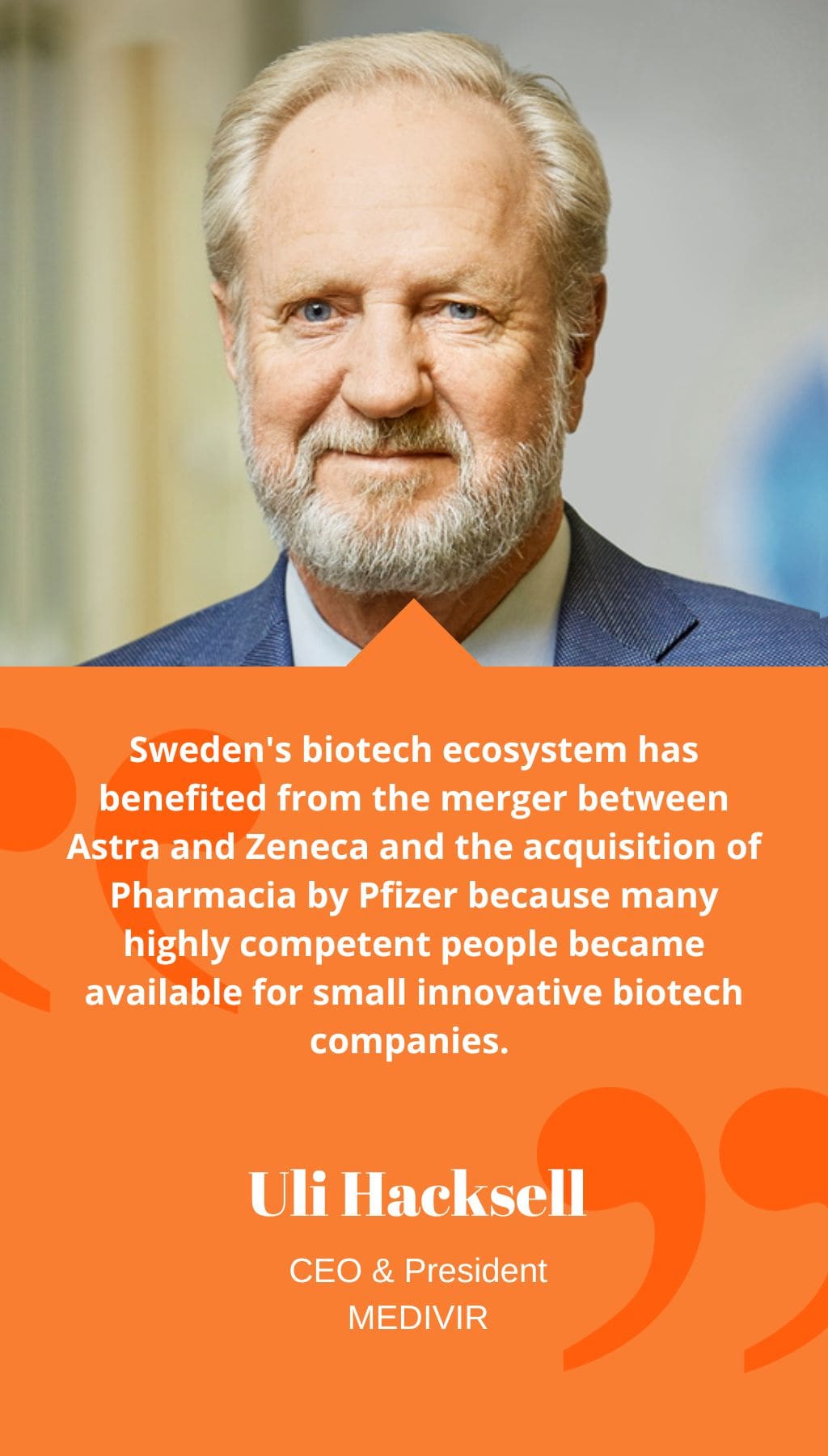
- Sweden | 15 July 2020

It has been almost a year since you became CEO of Medivir last October. What made you decide to take on this challenge?
The reason why I accepted this job was that I believed it was important to focus the resources of Medivir on clinical development and business development in order to create maximum shareholder value. At the beginning of its 30-year history, Medivir was primarily focused on research, collaborating with large pharma companies to develop its assets further. For instance, the company developed Olysio, a hepatitis C drug, in collaboration with Janssen which assumed the full responsibility for clinical development. The company also developed a product called Xerclear® (Zoviduo®) for the treatment of labial herpes and out-licensed marketing rights to Meda and GSK. My mission as CEO was to transform the structure of Medivir to a company laser-focused on clinical development and business development. As a result, we terminated all in-house preclinical research activities. In the process, we went from 75 full-time employees (FTEs) down to the current total of 14 FTEs. While it was a difficult process to have to let go of 60 employees, it was the right thing to do. A company like Medivir which does not yet generate profits has to be very careful about what it spends money on.
You have extensive experience in R&D management and executive leadership at biopharma companies in the US and Sweden. How does Sweden’s life sciences ecosystem compare to places like Boston and the San Francisco Bay Area?
Sweden’s biotech ecosystem has benefited from the merger between Astra and Zeneca and the acquisition of Pharmacia by Pfizer because many highly competent people became available for small innovative biotech companies. However, the problem is that, as these people get older, there is no longer a supply of talent with experience in clinical development. Nonetheless, we do have a supply of excellent scientists. In the past, close collaboration between industry and universities has been the cornerstone of the tremendous success of the Swedish pharmaceutical industry. About 80 percent of new drugs developed by Astra and Pharmacia emanated from research done at Swedish universities. Today, there is no longer such a large pharmaceutical company driving the ecosystem. The largest company headquartered in Sweden is SOBI, but its size is not comparable to the late Astra and Pharmacia. As a result, there is no longer a company with enough resources to take on the discoveries from universities. Instead, smaller biotech companies are now filling this role. However, taking a new compound to the market costs at least one billion dollars while the amount of capital available for these smaller ventures is limited and incomparable to what is available in the US. Few American investors are willing to fund life sciences companies in Europe and in Sweden. More needs to be done to attract foreign capital.
How is Medivir trying to attract investment from abroad?
For a Swedish entrepreneur, it might be difficult to even get a meeting with an American investor. Thankfully, due to my long experience from the US biotechnology sector, I have a large network in the US, both with investors and banks. The reason why American investors tend not to invest as readily in the European biotech sector is that they are worried they will not be able to have co-investors with deep pockets and a long-term investment strategy sharing the high risks and costs of clinical development.
What do you think should be done to increase the potential of Sweden as a global life sciences cluster?
Public investments have been made in research facilities such as the Science for Life Laboratory (SciLifeLab), one of the largest molecular biology research laboratories in Europe, as well as biomanufacturing capabilities like the Testa Center, a bioprocess pilot-scale facility set up as a collaboration between the government and GE and designed to help create a bridge between the research and industrial production of biopharmaceuticals. However, there is a lack of sufficiently large funds available. If the government could invest more in life sciences start-ups, for instance through the Industrifonden, a government-backed fund to promote Swedish industry, it could be very helpful.
Medivir recently presented results for its combination treatment with Keytruda® at the ASCO conference in Chicago. How was it received by the international life sciences community?
At ASCO, we presented long-term data from the Phase I trial for our combination therapy with Keytruda®, during which we studied patients with different kinds of solid tumours. In particular, one patient suffering from a specific type of colorectal cancer, microsatellite stable (MSS) colorectal cancer, has been a partial responder to our combination therapy and has received treatment for over 80 weeks. This is an exciting development, and the presentation focused on this specific case. The mere fact that we received a slot to present at ASCO shows the quality of our research and has garnered a lot of attention. The presentation was well-received by the community.
What key milestones would you like to achieve during your time as CEO?
First, we hope to find partners for both remetinostat and MIV-711. Then we will conclude the Phase I study for MIV-818 and the Phase II for birinapant in combination with Keytruda®. At the end of this year, we plan to conduct a futility analysis of the birinapant study on the first 14 patients.














